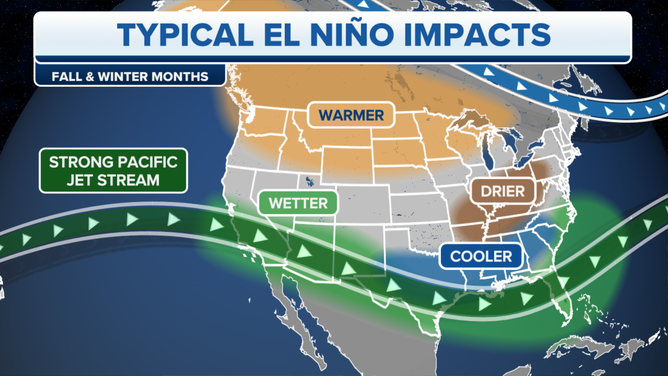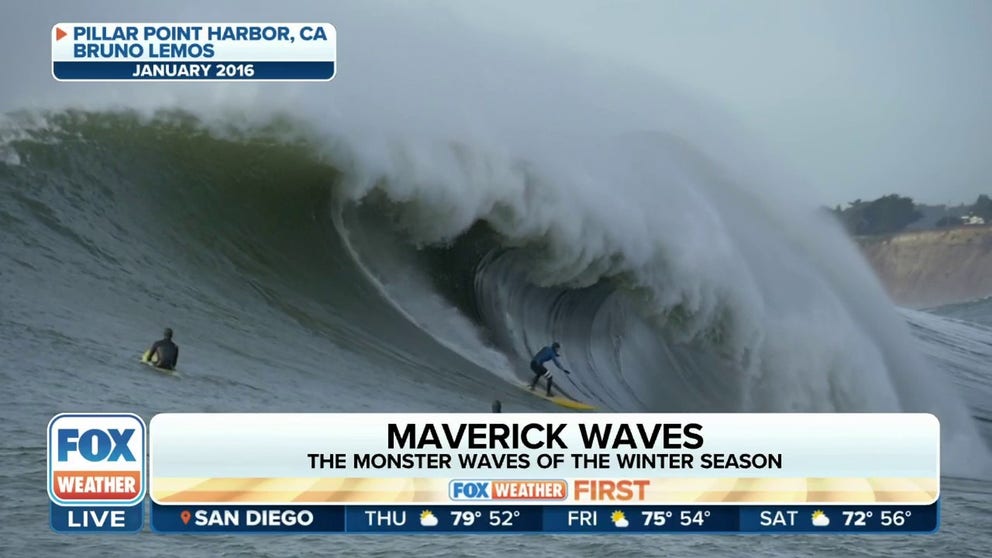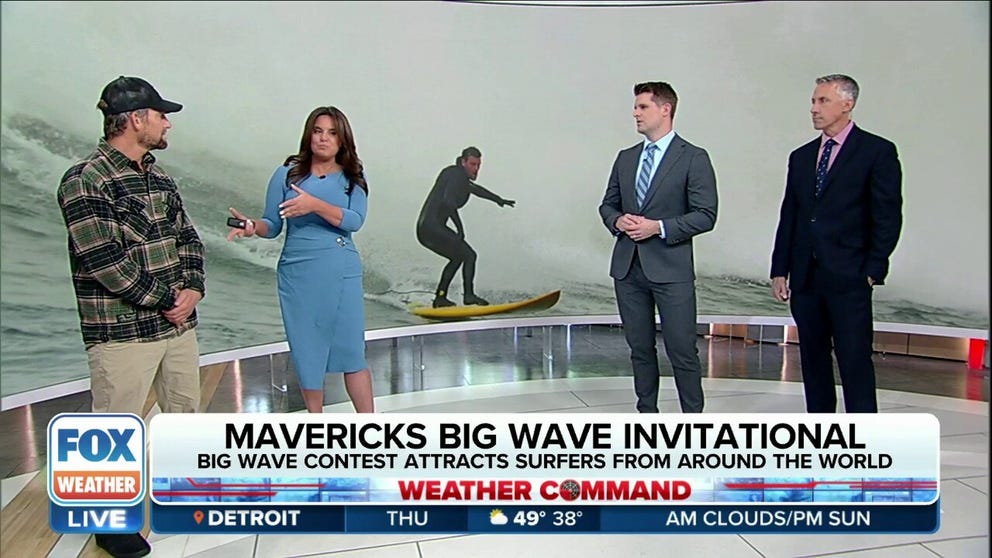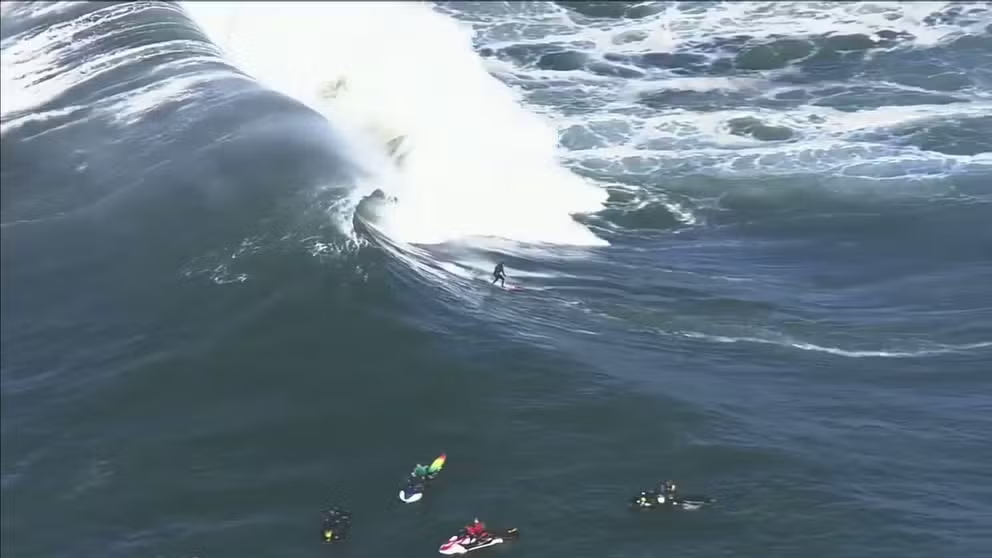California beach home to some of largest waves in world
Some El Niño events are associated with large waves along the California coastline. Storm systems are typically stronger as they approach the coast, leading to significant gradients of temperatures and pressures.
Maverick waves: The monster waves of the winter season
Maverick waves are the holy grail of waves to surfers. These monster waves can be anywhere from 25 to 60 feet tall. They creep in during the winter and stick around until November to March. The waves break off Pillar Point in Northern California, 20 miles south of San Francisco. They are so notorious that they attract surfers from all over the world. Will Skudin is one of those wave chasers, and he joins FOX Weather in studio.
HALF MOON BAY, Calif. – The shape of the California coastline, in combination with a rock formation about 20 miles south of San Francisco, can lead to surf reaching nearly 60 feet high that's known by locals as the Maverick waves.
Typically, the taller waves are around only a few times a year and are dictated by the presence of robust storm systems in the North Pacific.
An increased flow off the ocean produced in part by the significant gradients that exist between air masses can be responsible for funneling the high surf toward the Golden State.
Surf experts say the existence of a weather pattern known as El Niño can lead to an increased frequency of events that produce the massive surf.
"While every El Niño is a little bit different, and it can't guarantee enhanced surf, it does tend to produce larger-than-normal surf in the North Pacific," said Kevin Wallis, a forecasting director at Surfline. "So, areas like Hawaii and California tend to see larger-than-normal surf, especially during moderate-to-strong El Niño."
Surfline is a company based in California that specializes in surf forecasting and other surf reports for popular destinations around the world.
Meet the native New Yorker who travels world to hit Maverick waves
Maverick waves are the holy grail of waves to surfers. These monster waves can be anywhere from 25 to 60 feet tall. They creep in during the winter and stick around until November to March. The waves break off Pillar Point in Northern California, 20 miles south of San Francisco. They are so notorious that they attract surfers from all over the world. Will Skudin is one of those wave chasers, and he joins FOX Weather in studio.
"As surf forecasters, we're using a lot of the same tools that weather forecasters are using," Wallis added. "We start with sea-surface pressure charts, so we want to see where the storms are out in the North Pacific in the case of looking at surf for California or Hawaii. And then at that Surfline, we actually run an internal swell model, as well, called our LOTUS swell model. And that helps us really refine the details, like how big the swell periods are, swell direction and things like that."
El Niño weather patterns are known to keep the southern jet stream across the Pacific and North America active, leading to increased storm systems.

Typical El Nino impacts become more likely with a strong or historic event.
(FOX Weather)
Surfline forecasters say not all weather systems are known to produce the classic Maverick waves, but those that do so create an attraction for the most skilled surfers.
The phenomenon can turn deadly, throwing surfers into rocky formations and leading to drownings.
In addition to the Maverick waves, large storm systems can produce what are known as sneaker waves from the beaches of California to southwestern Canada.
While there is no scientific definition, NOAA says a sneaker wave is a rush of water that surges up the coast farther than expected.
The results can surprise beachgoers and become deadly by catching people off guard. Some of the waves can surge more than 150 feet up the beach and dislodge large objects, including logs.
Rocky coastlines, especially in Northern California, Oregon, Washington and Canada, are known to experience these waves without warning because of steep slopes.
NOAA says the power of the water can dislodge large boulders and trees, making the waves dangerous with debris.
HOW WEATHER IMPACTS WAVES DURING SURFING COMPETITIONS
Water temperatures that rarely reach 60 degrees cause the threat of hyperthermia to exist year-round.
Mavericks Beach used to be a destination for surfers to participate in a world-renowned contest known as the Titans of Mavericks, but the last time the event was held was in 2016.
Surfing Mavericks
File: Aerial footage of surfers catching waves at Mavericks.


